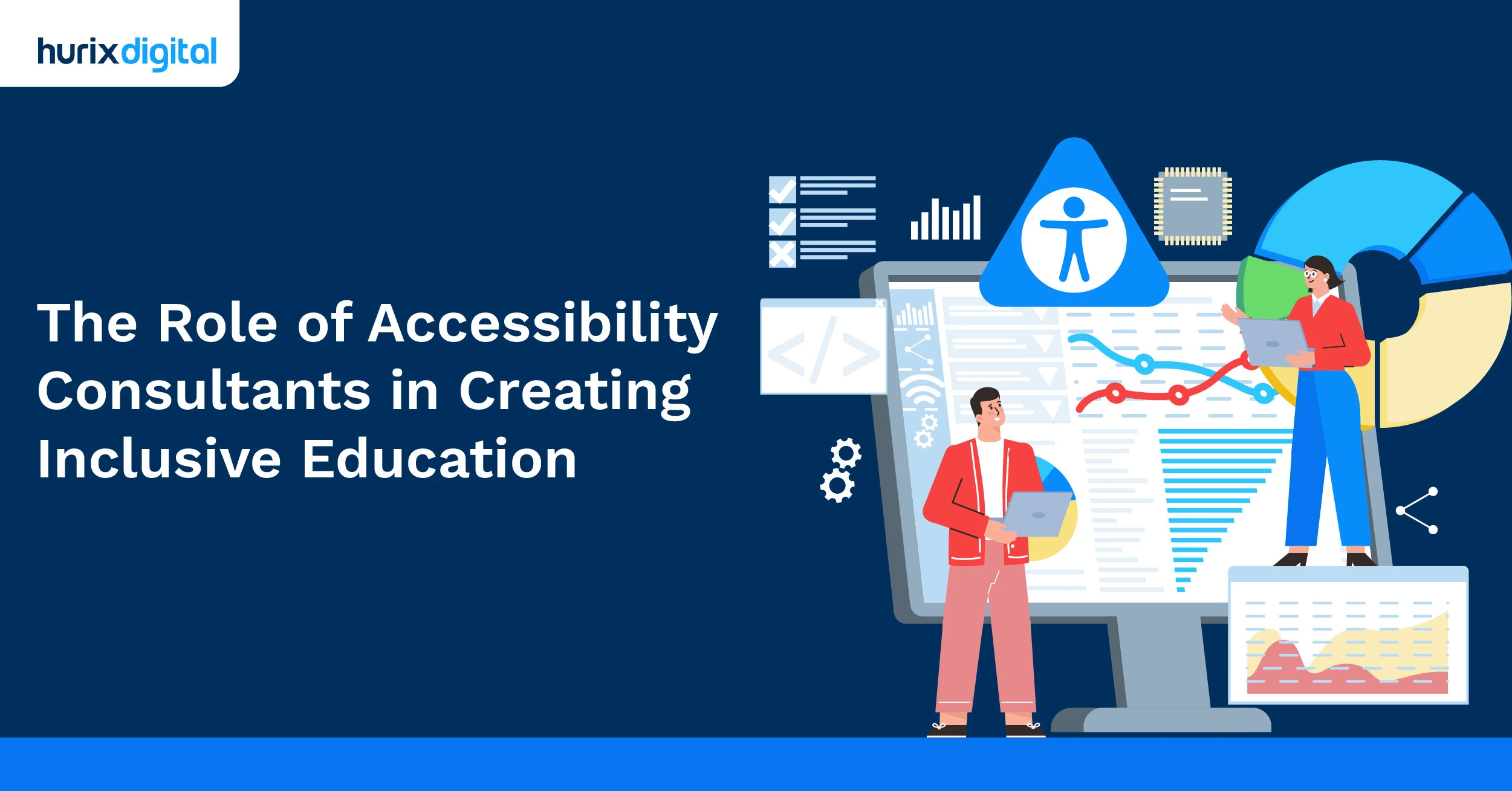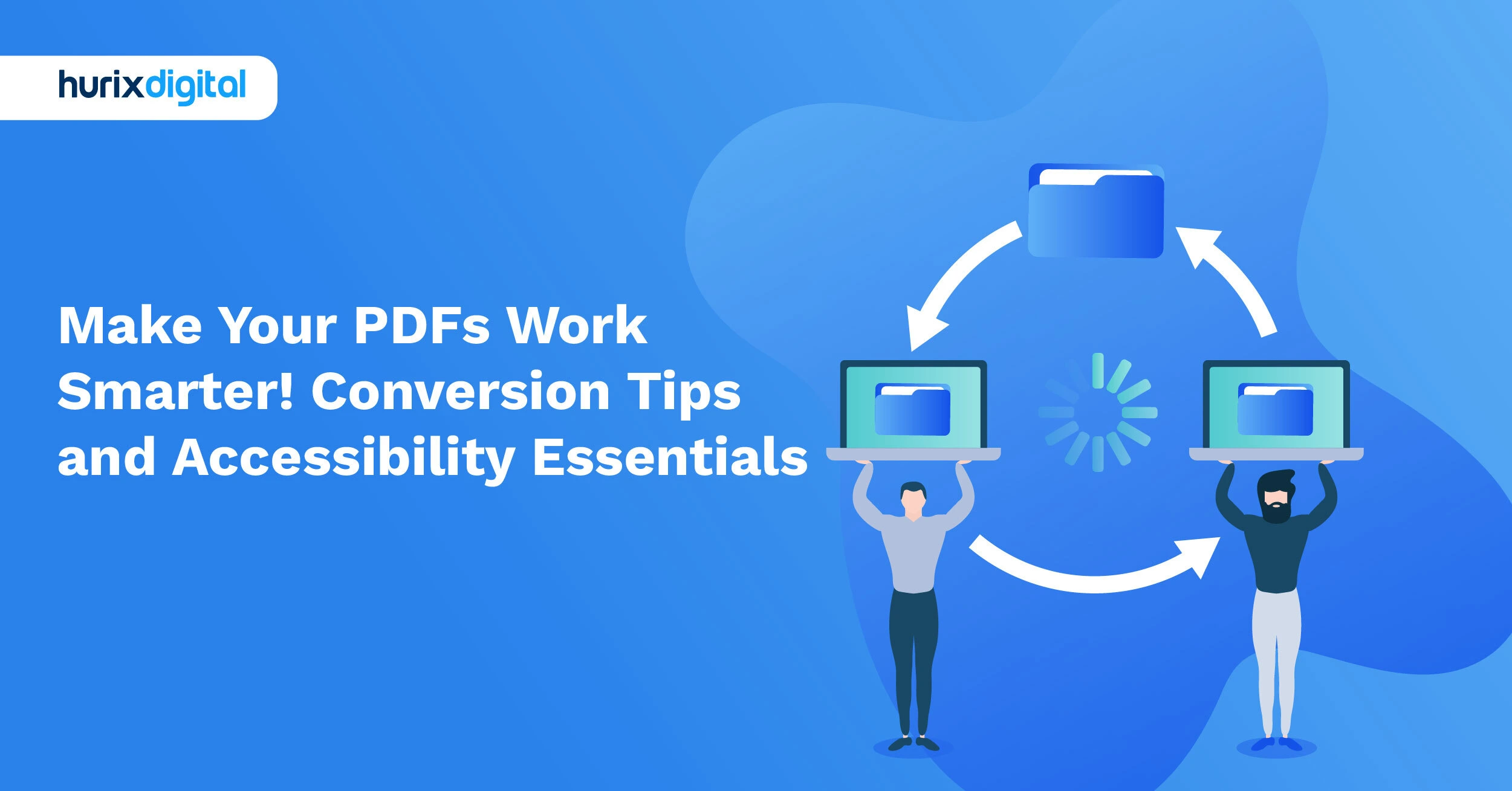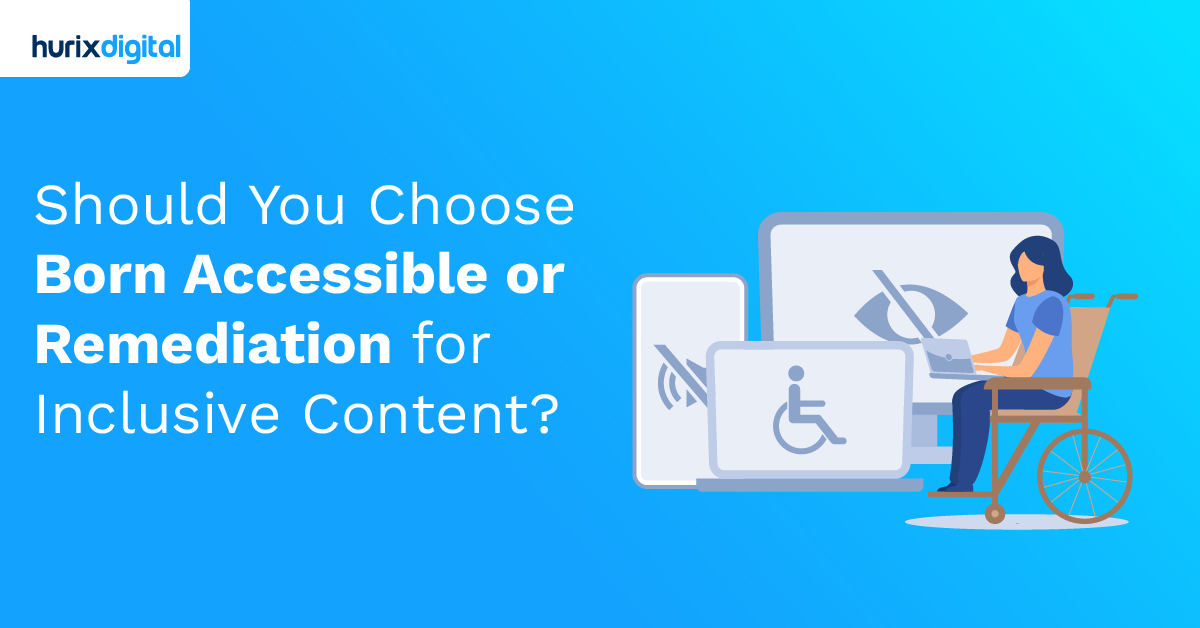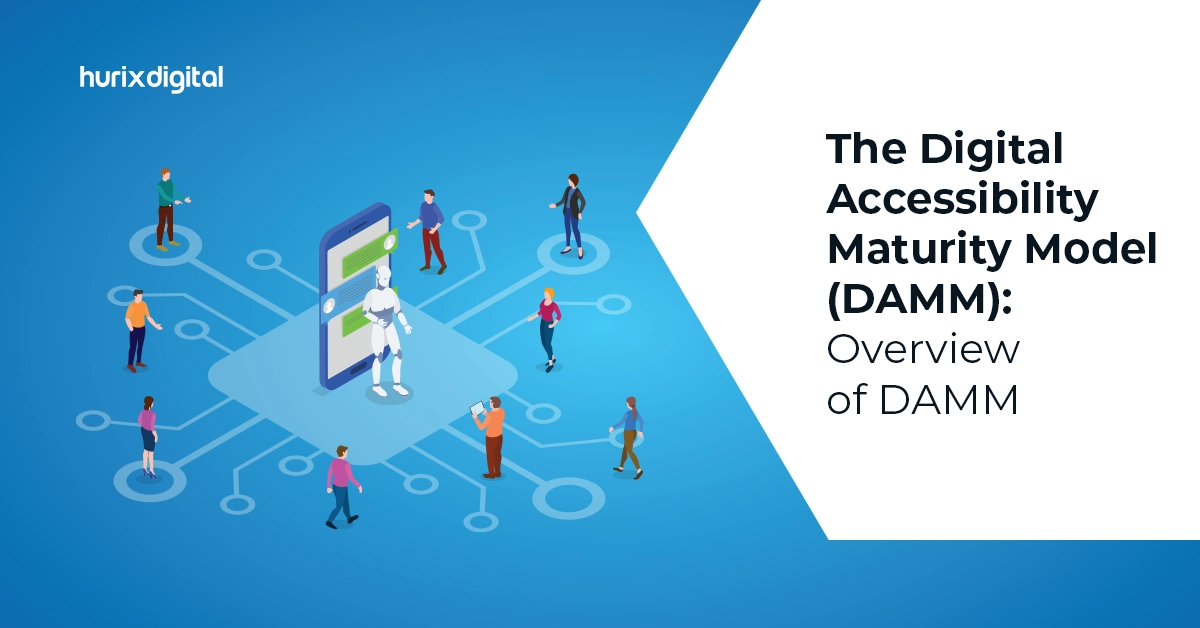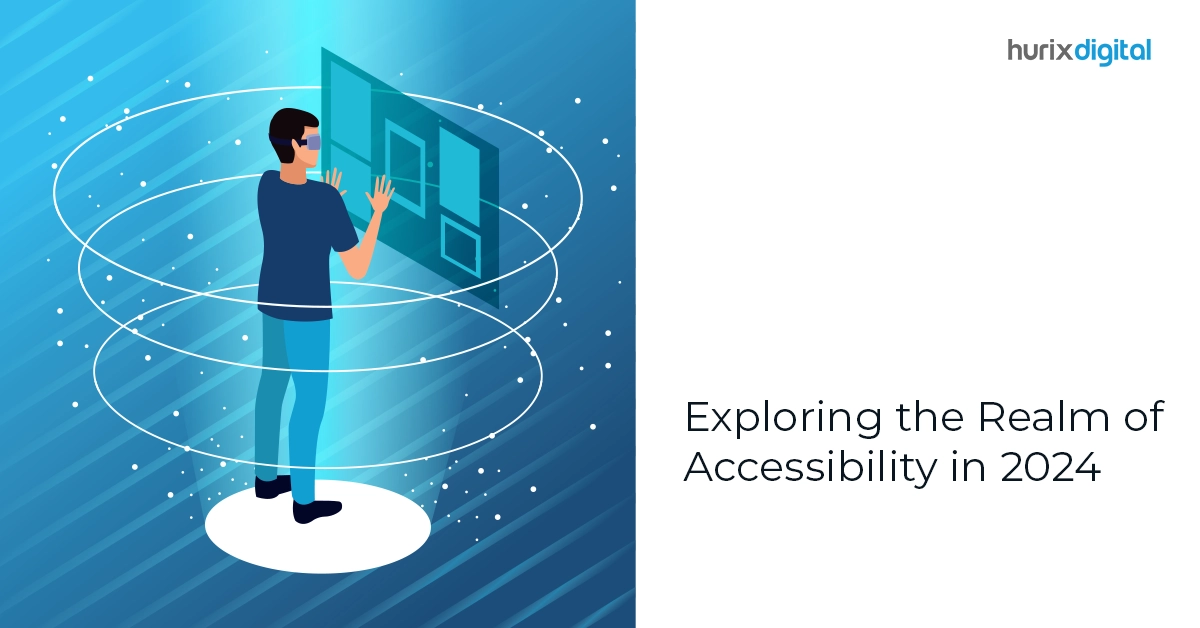
Exploring the Realm of Accessibility in 2024
Imagine an all-inclusive digital ecosystem where no one is left behind. Welcome to the world of digital accessibility. As we journey into 2024, let’s explore the transformative trends shaping a more inclusive future.
From AI’s ascendance to significant WCAG 3.0 considerations, there’s a revolution afoot in technology accessibility. And it’s not just about disability inclusion—it’s about the democratization of technology, an age of accessibility for all.
So, let’s buckle up and delve into the future of accessibility.
Table of Contents:
- What is Digital Accessibility?
- Current Trends: Revolutionizing Technology Accessibility
- Diving Deeper into WCAG 3.0 Considerations for Digital Platforms
- Accepting Inclusive Design
- The Intersection of Disability Inclusion and Technology Accessibility
- Summing Up
What is Digital Accessibility?
Digital accessibility refers to making the digital world accessible and navigable for all people, regardless of physical or cognitive impairments. In other words, it means accessible to everyone on digital channels.
- For instance, think about your favorite news website. Now, imagine if you’re visually impaired. To make this website accessible for you, it needs to have text-to-speech compatibility. This is a perfect example of digital accessibility.
- The Web Content Accessibility Guidelines (WCAG) are guidelines for making web content more accessible.
According to a 2023 survey by WebAIM, 96.3% of homepages had detectable WCAG 2 failures. This underlines the tremendous scope for improvement in the domain of digital accessibility.
Opening up the digital universe for everyone is about more than just compliance or business. It’s about inclusivity and humanity. It’s about making technology truly accessible, one step at a time.
Also Read: Common Pitfalls in Mobile App Accessibility Testing and How to Avoid Them?
Current Trends: Revolutionizing Technology Accessibility
Have you ever thought about what technology access truly means? It’s not just about owning the latest fancy gadget but about opening the digital world to everybody. Yes, that includes individuals who might be dealing with any disability, whether physical, cognitive, or even age-related.
It’s exciting to see how companies and developers worldwide are now placing greater emphasis on this and embracing the influential trends shaping the future of accessibility. Curious about what these trends are? Let’s explore some key examples together.
1. Taking Disability Inclusion to the Heart
In line with the global goal of achieving accessibility for all, more businesses are adopting an inclusive mindset and devising plans to satisfy all users’ needs. For example, many social media platforms simplify their interfaces and add functionalities like voice commands, making digital communication a breeze for everyone, even those with mobility issues.
It will promote companies’ brands and help them create a better corporate image. Companies, through accessibility laws like ADA and WCAG, avoid expensive lawsuits and, most importantly, subsequent legal sanctions.
Besides, this unlocks access to products and services for those traditionally excluded due to their disability, and you can reach a global market.
2. Accessibility Standards on the Rise
As per WCAG 3.0 considerations, companies must define accessibility standards, ensuring everyone can effectively utilize websites, apps, and digital tools. This promise of improved accessibility standards is expected to drive global accessibility forward.
Businesses can turn to services like Hurix Digital’s free accessibility audit to ensure accessibility standards are met. This audit helps organizations pinpoint critical areas of improvement, aligning their digital presence with WCAG 3.0 and other key accessibility benchmarks. Accessibility laws are becoming more stringent worldwide, leaving businesses with no choice but to adopt accessibility as a core aspect of their online products and services.
The industry giants are setting high benchmarks for other businesses, motivating them to commit to similar accessibility models. By following best practices in accessibility, companies can ensure their digital offerings are inclusive and user-friendly.
Accessibility needs to become a foundational principle of user-centered design, where designers consider the unique needs of disabled individuals when developing products and services.
3. AI Revolutionizing Accessibility
The fusion of AI and accessibility advancements is proving to be a game-changer. AI can help predict user behavior, make suggestions, and provide a tailored experience for users with disabilities.
For instance, AI-powered voice assistants and predictive keyboards have already made notable differences, and their utility is only expected to grow.
AI is leading the innovation of assistive technologies, such as screen readers, speech recognition software, and braille displays.
These tools are becoming increasingly sophisticated and user-friendly. They put more power directly into the hands of people with disabilities.
For example, AI can analyze user behavior and preferences and work toward offering digital experiences that best suit different needs. This could significantly help disabled users, as they’ll get particular accommodations.
AI-powered tools can efficiently automate the accessibility test, flagging and fixing issues. This might assist businesses in maintaining high accessibility standards and significantly reducing the time and cost associated with manual testing.
Diving Deeper into WCAG 3.0 Considerations for Digital Platforms
The introduction of the 3.0 version of the Web Content Accessibility Guidelines (WCAG) sets the accessibility guidelines to a different index. Introduced as part of the global movement for accessibility, these rules seek to monitor the level of digital accessibility that the web can provide.
1. Amplified Clarity
WCAG 3.0 sets specific objectives. Its primary focus is on describing ideas simply and understandably, implying that one will no longer have to wrestle with technical terminologies only developers understand.
It eliminates the technical complexity embedded in accessibility guidelines, making them easy for a wider spectrum of stakeholders to comprehend and implement.
By using a straightforward and unambiguous approach, the guidelines encourage information, design, and development practitioners to consider accessibility issues when creating their content.
2. Comprehensive and Holistic Evaluations
In the new framework, a website’s accessibility is calculated using an aggregation scoring system. This system considers all aspects, making the process less tedious and more representative of a user’s experience.
WCAG 3.0 introduces a more comprehensive approach to evaluating website accessibility. The aggregation scoring system considers multiple factors, including the severity of accessibility issues and their impact on user experience. This holistic approach provides a more accurate assessment of a website’s accessibility level.
3. Fluid Conformance Model
WCAG 3.0 shatters barriers by introducing a dynamic approach—the Conformance Model. It transcends beyond the former ‘Pass or Fail’ evaluation. So, if parts of your website are inaccessible, not all hope is lost. Some users can still navigate it.
The Conformance Model in WCAG 3.0 offers a more flexible and nuanced approach to assessing website accessibility. Instead of a binary “pass or fail” evaluation, the model allows for different conformance levels, recognizing that not all websites can achieve perfect accessibility. This encourages a more pragmatic approach to accessibility, focusing on continuous improvement and prioritizing the needs of users with disabilities.
Take, for instance, Hurix Digital, which has been diligently adhering to WCAG standards, making its digital content universally accessible. The future of accessibility seems promising, with WCAG 3.0 considerations as a beacon of hope for ushering in more inclusive online experiences.
Accepting Inclusive Design
The future of accessibility is crucial for the global accessibility community. Turning our gaze to the much-anticipated WCAG 3.0, we find several crucial points of focus in 2024.
- The new web accessibility policy prioritizes human needs, driving efforts to make digital content more accessible and usable for individuals with disabilities. Consider how your digital accessibility strategies can align with this user-first strategy.
- WCAG 3.0 differs from the binary pass/fail methodology that characterizes WCAG 2.0. Now, you can provide your users with a more accurate and individual adaptation.
- We need to pay close attention to the holistic accessibility that forms part of WCAG 3.0. Now, the time has come to consider accessibility outside your web content. Consider how you can practice inclusive design throughout your digital presence.
As we navigate the realm of accessibility in 2024, it’s paramount that we embrace these new standards and create a more inclusive digital world.
The Intersection of Disability Inclusion and Technology Accessibility
As the clock ticks into 2024, the amalgamation of disability inclusion and technology accessibility continues to make giant strides. Compliance with standards has grown beyond just a requirement; it’s now about nurturing an all-encompassing space where digital platforms open their doors to every user, irrespective of their abilities.
Picture this: an e-commerce platform integrating voice-assist technology, making site navigation and shopping a breeze for visually impaired users. The essence of such advancements lies in elevating the user experience and paving the path toward true accessibility for all.
| Stakeholder | Role in Accessibility |
| Designers | Implementing inclusive design principles from the initial stages of product development. |
| Developers | Building functionalities with WCAG 3.0 considerations to ensure global accessibility. |
| AI experts | Developing AI capabilities that enhance digital accessibility and improve the user experience. |
| End-users | Providing crucial feedback to guide further accessibility advancements. |
Also Read: How ISO Standards Enhance Digital Accessibility?
Summing Up
There’s no denying that advancements in technology and AI are paving the way for more inclusive design and improved digital accessibility. While accessibility continues to evolve rapidly, 2024 promises even more exciting trends. This journey towards universal accessibility can be daunting without the right partner.
Navigating the intricate landscape of global accessibility effortlessly demands expertise and familiarity with WCAG 3.0 considerations, among other critical aspects. As a frontrunner in digital content and creative services, Hurix Digital empowers clients with AI-driven solutions and tailors effective accessibility approaches for different platforms.
Learn more about how we can support your accessibility goals and create a more inclusive digital experience for all users.

Vice President – Content Transformation at HurixDigital, based in Chennai. With nearly 20 years in digital content, he leads large-scale transformation and accessibility initiatives. A frequent presenter (e.g., London Book Fair 2025), Gokulnath drives AI-powered publishing solutions and inclusive content strategies for global clients

